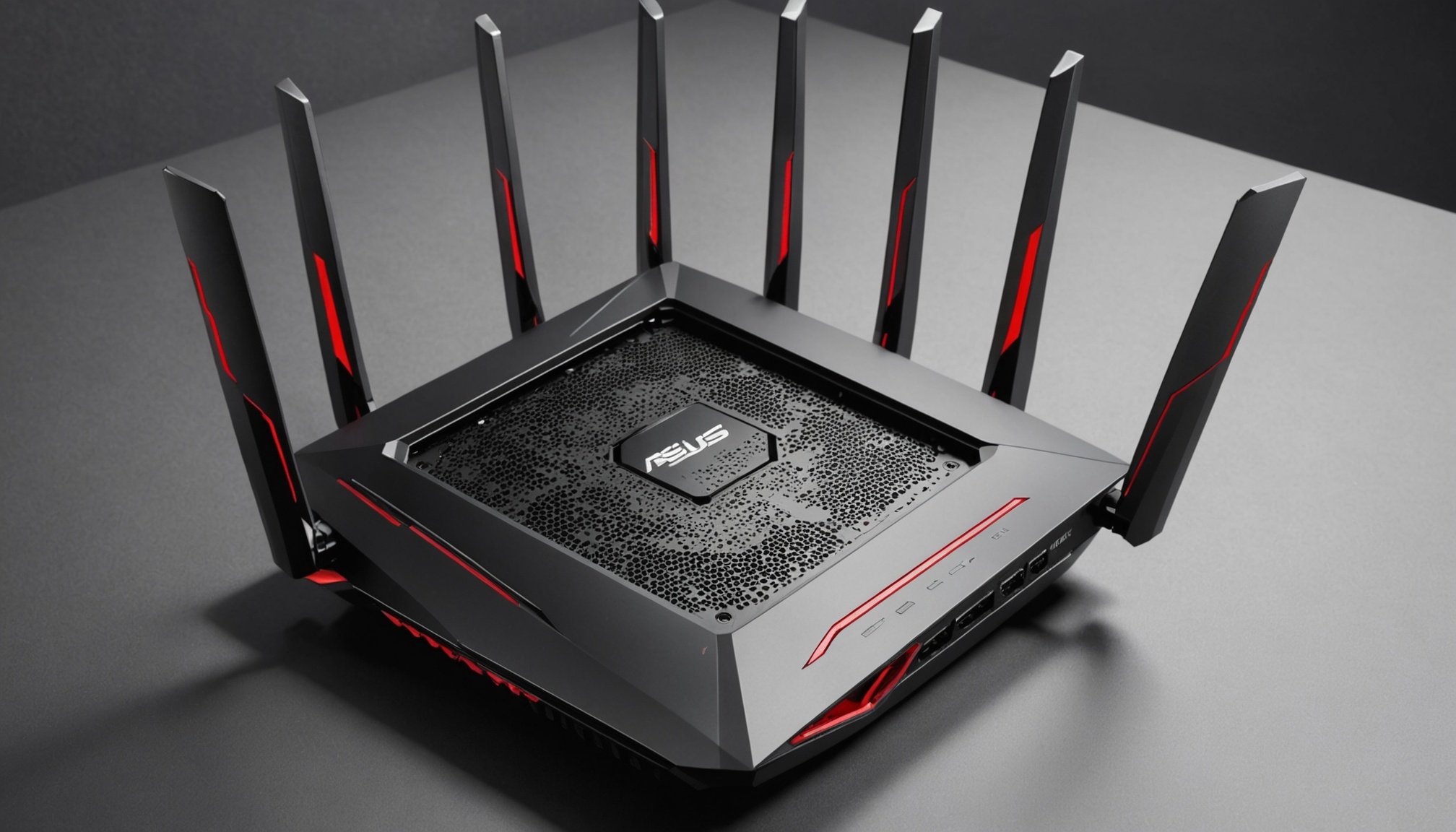Prerequisites for Setting Up the VPN
Before commencing with the VPN Setup, it’s important to ensure all prerequisites are met for efficient functionality on your ASUS RT-AX86U Router. Required hardware includes a compatible device, such as a PC or smartphone, capable of accessing the router’s interface. Additionally, the ASUS RT-AX86U router itself needs to be connected and updated with the latest firmware.
Required software typically involves the installation of any necessary VPN client software that supports setups on ASUS routers, although some configurations might be achieved directly via the router’s firmware. An active Internet connection is mandatory, meeting specific speed and stability specifications to guarantee effective VPN performance. This might mean a broadband connection with a minimum throughput, ensuring there are no significant bandwidth constraints.
In the same genre : Comprehensive Handbook for Building Your Raspberry Pi Home Security System with MotionEye: Essential Configurations for Optimal Performance
Lastly, addressing necessary accounts and subscriptions, you need to have a valid subscription with a VPN provider that supports ASUS routers. This includes confirmation of your login credentials such as username and password, as these will be required during the configuration phase. Once these requirements are fulfilled, you can proceed with confidence, knowing that your setup aligns with necessary hardware and software standards.
Accessing the ASUS RT-AX86U Router Interface
To effectively begin configuring your ASUS RT-AX86U, it’s crucial to access its interface through the router access process. First, ensure your device is connected to the router—either wired or wirelessly. Open a web browser and enter the router’s IP address, commonly 192.168.1.1, into the address bar. This step facilitates entry into the system’s configuration settings.
Have you seen this : Comprehensive Guide to Upgrading and Installing Additional RAM in Your Lenovo ThinkStation P620: A Step-by-Step Approach
Once prompted, use the default credentials to log in. This typically involves entering “admin” for both the username and password fields, unless previously modified. Remember to change these credentials post-login to enhance security. In scenarios where the default credentials do not work, consider resetting your router to factory settings.
After successful login, you’ll be greeted with the router’s user interface, a dashboard featuring navigational tools for various configurations. Familiarise yourself with sections pertaining to network settings, security, and VPN options. The user interface is designed to be intuitive, offering helpful icons and tooltips throughout the platform to assist in precisely modifying your desired settings.
By understanding these foundational steps, you’ll enhance your efficiency in navigating and managing your ASUS RT-AX86U’s configurations, paving the way for a successful and secure VPN setup.
Configuring VPN Settings
VPN Configuration on the ASUS RT-AX86U involves several steps to ensure a seamless experience.
Selecting the VPN Protocol
Choosing the right VPN protocol is pivotal. Options like OpenVPN, PPTP, and L2TP/IPSec vary by speed and security. For optimal security, many recommend OpenVPN, although some prefer the speed advantage of other protocols. Each protocol has its strengths: OpenVPN is lauded for security, whereas PPTP offers faster connection speeds but less encryption.
Inputting VPN Credentials
Properly inputting your VPN credentials is crucial for a successful connection. Your username and password, provided by your VPN service, need to be accurate. This information is entered when prompted in the router’s VPN settings. Double-check these details for precision, ensuring there are no mistakes.
Configuring Connection Options
Adjusting connection options like DNS settings or enabling a kill switch enhances both speed and security. Optimising such settings can improve your VPN’s functionality. Evaluate settings like MTU size or enabling split tunneling for better performance based on your needs. By tweaking these settings, the router can provide a more tailored and efficient VPN service. This comprehensive configuration makes a significant difference in overall speed and protection.
Implementing Security Features
Boosting your ASUS RT-AX86U with VPN Security Features ensures a safer network environment. Begin by enabling firewall settings to block unauthorized access attempts. This crucial step acts as your first line of defence against potential network breaches.
Next, focus on network encryption options. Utilizing strong encryption protocols helps protect your data from prying eyes. With VPNs, choices like AES-256 encryption are recommended for robust security, minimizing risks of data interception.
Keeping your router’s firmware updated is equally vital. Regular firmware updates patch vulnerabilities and enhance performance. Set reminders to check for updates annually as manufacturers routinely enhance security features and resolve potential vulnerabilities.
Having a comprehensive security strategy in place not only fortifies your network but also provides peace of mind. Ensuring these security measures are activated transforms your ASUS RT-AX86U into a resilient shield against cyber threats.
By incorporating these security features, you create a fortified environment that protects sensitive information, maintains privacy, and avoids potential threats. Effective implementation of these features ensures your VPN setup is not only functional but also secure, providing a shielded online experience. This makes your investment in a VPN setup worthwhile by safeguarding your data and enhancing trust in your network.
Optimizing VPN for Speed
To achieve optimal performance when using a VPN on your ASUS RT-AX86U, focus on VPN Speed Optimization. The first step is choosing the fastest VPN server. Connect to a location geographically closer to you, as this generally offers faster speeds due to reduced latency. Many VPN providers have a feature that automatically selects the fastest available server.
Minimize interference by ensuring interference from other devices is reduced. High traffic from multiple devices on your network can degrade VPN performance. Consider disconnecting unnecessary devices temporarily or switching to a less congested Wi-Fi channel.
Adjust MTU settings for better performance. The Maximum Transmission Unit (MTU) defines the largest packet size sent over the network. If set too high or low, it can cause fragmentation or latency. Start by setting the MTU value to 1500 (default) and adjust incrementally. For VPNs, smaller MTU sizes might work better due to encryption overhead.
By incorporating these strategies, you can enhance your VPN usage experience. With faster connections and fewer interruptions, these techniques help you utilize your ASUS RT-AX86U to its fullest potential, boosting both performance and efficiency.
Troubleshooting Common VPN Issues
When encountering issues with VPN connectivity on your ASUS RT-AX86U, understanding common problems and their solutions is essential. Connection failures can often be attributed to incorrect login credentials or configuration errors within your VPN setup. Double-check that the VPN credentials are entered correctly and that the selected VPN protocol is compatible with your router.
Connection Failures
Connection failures may occur due to server outages or incorrect settings. Ensure your VPN server selection is accurate, and verify your Internet connection stability and router configuration. If problems persist, consider resetting the router to restore its default settings.
Slow Speeds
Slow VPN speeds can result from network congestion or server distance. Opt for VPN servers closer to your physical location to reduce latency. Additionally, minimize bandwidth usage by disconnecting unnecessary devices from your network to enhance performance.
Incompatibility Issues
Ensure your ASUS RT-AX86U router firmware is updated to meet VPN specifications. Certain VPNs may not be fully supported due to outdated firmware or incompatible settings. Keep both your VPN application and router firmware current for optimal compatibility.
By addressing these issues systematically, you can resolve many common obstacles quickly and efficiently, enhancing your VPN experience.
Additional Features and Settings
The ASUS RT-AX86U offers a rich array of Advanced VPN Settings that can enhance your network’s capabilities.
Split Tunneling Options
Split tunneling lets you route some of your device’s internet traffic through the VPN, while allowing the rest to access the local internet directly. This is beneficial when you want to secure specific tasks, such as online banking, while maintaining high speed for local activities like streaming. On the ASUS RT-AX86U, configuring split tunneling involves specifying which apps use the VPN connection, enhancing both security and performance by selectively encrypting streams.
DNS Leak Protection
Enabling DNS leak protection ensures that your browsing data remains private and that DNS requests do not default to your regular ISP. On the ASUS RT-AX86U, this setting can be activated through the router’s VPN configuration page, providing an extra layer of security by keeping your browsing history hidden from any potential third-party visibility.
Using VPN on Multiple Devices
The ability to simultaneously use a VPN on multiple devices is vital for households with various internet-connected gadgets. The ASUS RT-AX86U supports multiple simultaneous VPN connections, allowing you to protect laptops, smartphones, and more under a unified, secure network configuration. Configure this by setting device priorities within the router interface to manage bandwidth and ensure seamless connectivity across all connected devices.
Frequently Asked Questions
In this section, we tackle common user questions regarding VPN usage on the ASUS RT-AX86U.
What Are VPN Setup Prerequisites?
To establish a VPN on your ASUS RT-AX86U, you need compatible hardware—like a PC or smartphone for accessing the router—and the router itself with the latest firmware. Additionally, any necessary VPN client software should support ASUS routers. You’ll also require a reliable Internet connection with sufficient speed to ensure efficiency. Don’t forget necessary accounts and subscriptions: a valid VPN provider account with correct login credentials is essential.
What Can Cause VPN Disconnections?
VPN disconnections can occur due to incorrect settings, network instability, or server issues. Ensure your router’s IP configuration settings are correct, and verify your Internet’s stability. If disconnections persist, attempt to reconnect using different server options provided by your VPN service. Regular checking for firmware updates on your ASUS RT-AX86U can also mitigate compatibility problems that might lead to disconnections.
How Can I Enhance VPN Security on My ASUS Router?
Boosting your VPN’s security involves activating firewall settings to prevent unauthorized access, using robust encryption protocols like AES-256, and regularly updating firmware. Adapting these VPN security features builds a more secure and safeguarded network environment, protecting sensitive data efficiently.











